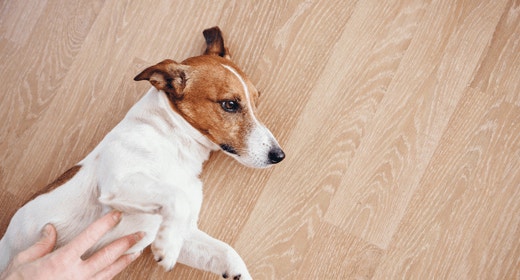

Kembung adalah kondisi yang mengancam jiwa, bergerak cepat dan dapat menyebabkan kematian dalam beberapa jam jika tidak segera dikenali dan diobati. Sayangnya, penyebab kembung masih belum diketahui saat ini.
Istilah ilmiah untuk kembung adalah dilatasi lambung-volvulus atau GDV. Kembung ditandai dengan perut membesar dengan cepat dan tidak normal karena gas (dilatasi). Ini dapat diikuti dengan perut melilit (volvulus). Perut melilit ini menutup jalan masuk dan keluar dari lambung. Pembuluh darah juga tertutup, dan aliran darah tersumbat
Selanjutnya terjadi peningkatan tekanan di dalam perut dan organ di sekitarnya. Akhirnya, syok akan terjadi karena aliran darah yang terbatas.
Beberapa fakta penting tentang kembung:
• Kembung harus selalu dianggap sebagai keadaan darurat medis.
• Kembung dapat membunuh anjing dalam beberapa jam setelah serangan.
• Penyebab kembung tidak diketahui.
• Kembung terjadi pada 36.000 anjing di Amerika Serikat setiap tahun; 30% meninggal akibat kondisi ini.
• Kembung dapat terjadi pada anjing dari segala usia.
• Ras tertentu lebih rentan terhadap kembung, terutama anjing berdada dalam.
• Lambung cepat mengembang karena gas kemudian lambung melilit keras. Jalan masuk dan keluar dari lambung terbatas, menyebabkan pembuluh darah menutup dan aliran darah tersumbat.
Kembung adalah keadaan darurat medis yang serius, dan identifikasi serta pengobatan dini sangat penting untuk kelangsungan hidup.
Pada tahap awal kembung, anjing akan sangat tidak nyaman. Anda mungkin melihat dia mondar-mandir dan merengek atau tidak berhasil mendapatkan posisi yang nyaman. Dia mungkin tampak cemas, menjilat atau terus menatap perutnya, dan mencoba muntah, tanpa hasil.
Indikasi lain dari kembung antara lain kelemahan, pembengkakan perut, dan bahkan tanda-tanda syok. Tanda-tanda syok adalah peningkatan denyut jantung dan pernapasan cepat yang tidak normal.
Jika Anda melihat tanda-tanda ini, segera hubungi Dokter Hewan Anda!
• Merengek
• Tidak merasa nyaman
• Mondar-mandir atau gelisah
• Gusi pucat
• Berusaha untuk muntah tapi tidak berhasil
• Napas cepat yang tidak normal
• Peningkatan denyut jantung
• Kecemasan
• Nyeri, kelemahan
• Pembengkakan perut (terutama sisi kiri)
Saran-saran ini dapat membantu Anda mencegah kembung pada anjing Anda. Namun berdasarkan faktor risiko dan tidak dijamin untuk mencegah timbulnya kembung.
• Berikan makanan dalam jumlah kecil dengan sering, dua sampai tiga kali sehari.
• Hindari olahraga selama satu jam sebelum dan dua jam setelah makan.
• Jangan biarkan anjing Anda minum banyak air sebelum atau sesudah makan atau berolahraga.
• Jika Anda memiliki dua atau lebih anjing, beri mereka makan secara terpisah untuk menghindari makan yang cepat dan membuat stres.
• Jika memungkinkan, berilah makan dan amati sikap anjing setelah makan
• Hindari perubahan makanan mendadak.
• Jika Anda melihat tanda-tanda kembung, segera hubungi Dokter Hewan Anda.
Cara lain Anda dapat membantu mencegah kembung adalah dengan memberi makan makanan berkualitas tinggi dan sangat mudah dicerna dengan kadar serat normal.
Manajemen Pemberian Makan menawarkan metode terbaik untuk mengurangi risiko sampai penyebab pasti dari kembung dapat diidentifikasi. Meskipun tidak 100% efektif, langkah-langkah ini dapat mengurangi jumlah anjing yang menghadapi kondisi serius yang mengancam jiwa ini.